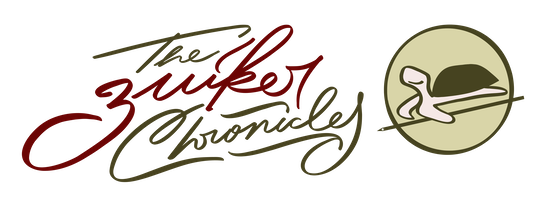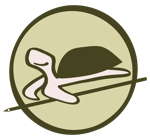Safety in the air
by Anton Zuiker on March 18, 2019
In January, when Anna and Malia accompanied me on the trip to Chicago, we flew Southwest Airlines. The flight from Raleigh-Durham to Midway was on a very new, nice, and comfortable airplane. I remember telling the girls how nice it was to have so much leg room. The plane was a Boeing 737 MAX 8.
That plane, and all Boeing 737 MAX 8 planes around the world, are grounded as officials study the cause of the crash of Ethiopian Airlines flight 302 on March 10. The Seattle Times has published its investigative reporting about the way the 737 MAX 8 was certified by the Federal Aviation Administration. Aviation crash investigations take time, and the truth may emerge differently than we think we understand the causes and effects today.
I’ve loved Boeing jets since I was a boy, watching 707s take off from the Phoenix runway and touring the Boeing visitor center on a family trip from our home in Idaho to Seattle in the late 1970s. (I was a Seattle Supersonics and Dennis Johnson fan at the time; a few years ago, I met the parent of Anna’s classmate, who turned out to be UNC standout Tom LaGarde, also a member of the 1979 NBA champion Sonics.) Even my post about our trip to Australia gushes about the Boeing 787 Dreamliner.
I’ll be in the air again soon, hoping for a safe flight and wishing for that spacious seat on the MAX 8. Let’s hope the aviation regulators, experts, and engineers find their answers and solutions so the airplanes in the skies are safe for all.
The writing-cabin rabbit hole
by Anton Zuiker on March 17, 2019
Every two months, a new issue of dwell arrives in the mailbox, and I eagerly sit down with the magazine to read about cool architects, artistic individuals, and the modern homes they build around the world. I’ll invariably see a cool cabin or Scandinavian sauna or sleek wood-burning stove, and I’ll be off on a couple of hours of searching and surfing to find out more. I am keen to build a writer’s retreat out on the back part of our wooded lot, and I dream.
A new issue arrived yesterday. I read it on our back deck in the warm sunshine, and was soon learning about the MINIMOD Spot, a perfect contender for the retreat except it’s only available in Brazil and Uruguay, and then I found myself looking at the Muji Hut, but that’s only available in Japan. The Danish wood stoves I could probably get, but they’re expensive. Good architecture and design and craftsmanship should be well compensated.
I know a few architects, and have met others, so I suspect that in the end I’ll turn to one of them to solve this itch. Maybe our Peace Corps friend, Kevin Anderson. Or Nick’s sister-in-law, Carina Coel and her Austin-based all-women firm Restructure Studio, which just announced their Arbor Plans project to offer “green-by-design, ready-to-build architectural home plans and Accessory Dwelling Units.” Or Dot’s son, Nathan Hutchins, though he’s designed posh hotel interiors and his firm, Muza Lab is way out of my league.
As I said, the writer’s retreat out back is a dream, and a rabbit hole I’ll keep diving into.
Into the wildflowers
by Anton Zuiker on March 16, 2019

Anna, Erin, Malia and wildflowers (August 2007)
That Dan Barber TED talk reminded me I hadn’t been to the Carrboro Farmers Market in many months, so this morning Oliver and I took a short drive over there. We got our treats, cherry babka for me and cinnamon roll for him, and I bought a small pot of bloodroot and a some other items.
Back home, I spent the day outside, redistributing the firewood and limbs, hauling rocks across the yard, raking leaves and dirt as we toil to make the ground around the house ready for grass. We had help today from a guy who does a lot of projects for us. Today he brought a tiller to work the ground, and I asked him to prepare space near the garden boxes where I could plant the wildflower mix that’s been in the shed since last year.
The photo above is my all-time favorite, taken on an August afternoon in West Jefferson, North Carolina during a vacation in the mountains. We stayed at the home of one of Erin’s law-school classmates. The South Fork of the New River ran through the back yard, and the family had a large swath of wildflowers that was simply heavenly. I’ve wanted to recreate that slice of heaven ever since.
The bloodroot I planted near the giant white oak tree.

Bloodroot
Free to read
by Anton Zuiker on March 15, 2019
Match Day over and the work week done, I came home, retired to the sofa, flipped on the television, and found a TED talk to watch: Dan Barber on How I fell in love with a fish.
Erin joined me in the living room to listen to Barber talk about truly sustainable fish farming in Spain.
I mentioned to Erin that Barber’s book was one of the best I’d read in the last 10 years. I found it in the library and handed it to her.
“I haven’t seen you reading this,” she said.
“It’s been awhile,” I said. “I read it that year I was quiet.”
The quiet year was my blogging and social media sabbatical, when I read a lot, got outside often to breathe, walk and run. Eventually, I wrote a 3,000-word essay that I thought would be a good way to explain what my reflection had helped me realize, but then I boiled that down to less than 300 and made that my Zuiker Chronicles redux post.
Holding Barber’s book again tonight, I tried to remember what I’d written about Third Plate. Here are two sections of that longer essay, with the themes and references that have made it into many of my blog posts since.
∷
From the bookshelf, I took down the paperback copy of Blue Highways, by William Least Heat-Moon. This was a book I started in college, but never finished. A classic of narrative nonfiction, it’s a journal of Least Heat-Moon’s getting out—his university sabbatical and journey across America, and a chronicle of conversations he had with people in small-town cafes and roadside campgrounds. I recognized many of the places on his journey, geographical but also emotional. I devoured Delicious, a novel by food writer Ruth Reichl, with a protagonist who is mentored by an old-school Italian deli owner who takes his sweet time to talk and listen to his customers. I take time to read, take my time reading, Capote, McCann, Mitchell, Patchett, Steinbeck, Cervantes, Finnegan, Boo, and others.
Blue Highways made me want to get out and travel. The Rural Life, by Verlyn Klinkenborg, made me want to sit down and watch. Klinkenborg reflects on small details and routine activities on his weekend farm in upstate New York, in short essays that are insightful and meaningful, just the kind of writing I’d always wanted to do myself. Klinkenborg is a professor of creative writing, and his newest book is ‘Several short sentences about writing.’ To write as clearly as possible, he advises, be observant, reflect on what interests you, and, above all, notice what you are noticing. Or, “See what you’re looking at,” chef Dan Barber quotes wheat farmer Klaas Martens quoting soils professor William Albrecht, in Barber’s excellent The Third Plate meditation on the future of food. Sitting one afternoon on my favorite stone bench in the Duke Gardens, I watched a great blue heron hunting slowly in the stream. The bamboo rubbed and rustled gently in the breeze, and slow deep breaths filled my lungs with warm Spring air. After a while, I noticed that I felt no need to rush that image out to the world. What I was looking at was mine, for just that moment.
∷
The TED talk over, and the Duke-UNC game still to start, we watched the stunning documentary Free Solo about Alex Honnold’s climb up El Capitan without any ropes. An amazing feat.
Look for the row of hearts
by Anton Zuiker on March 14, 2019

Look for this sign.
Rob Walker is a journalist who covers design, technology, and other areas. I learned about him when Jason Kottke linked to his forthcoming book, The Art of Noticing, a compendium of exercises and practices to “spark creativity, find inspiration, and discover joy In the everyday.”
Or, as Verlyn Klinkenborg would say, “notice what you’re noticing.”
I’m looking to see how we might incorporate Walker’s ideas at Duke, and his representative sent me a review copy of the book. I’m liking it, and I’m sure I’ll read through it page by page over the next week or so, but I also have the sense many of these practices will be part of my next decade of observation or listening or awareness (or whatever I end up calling it).
I subscribe to a newsletter from Walker with ideas and links related to his book and ways to practice observationn. In the latest edition of his newsletter (#13), Walker writes about an iconic New Orleans po-boy restaurant and how it’s a landmark by which to direct others.
Brooding over this later, I got nostalgic for the days of giving and receiving oral directions: “Stay on that road for about a mile, until you see a place that obviously used to be a Shell station but now isn’t anymore, and turn left just after that.” Nobody has to say things like that — “Look for a place to park as soon you see the big pink po-boy restaurant; you can’t miss it” — because everybody just expects that everybody else will let their phone tell them how to get wherever. I really can’t remember the last time someone said “You can’t miss it” to me!
Ah, but we still use a landmark to help people find our house in the woods. When friends come to our house, we tell them to look for the sign that says “Keep fighting, love will win.” The sign is on the side of a busy road and makes it easy to find the gravel road that brings you to our house. The sign became even easier to spot last month, because the artist who lives in the house with the sign added a row of red hearts to the top.
Last summer, during our 48 hours on Paama, we walked with the family up to see the gardens. Redy and Priscilla and Yannick and the kids knew every coconut tree and hillside and kava plant. At one point, a tree had fallen across the path, and we stopped to have a discussion about whose tree it was and how recently it would have toppled (the previous night) and when the yams nearby were last planted. I noticed their attention to the details of their island and their community, and that’s reminded me to look more closely to what’s on our four acres here in Chapel Hill. If you drive up the gravel road some weekend afternoon, you might find me out back, swinging in a hammock. Just look for the dead cedar tree nestled between the trunks of two oaks.

